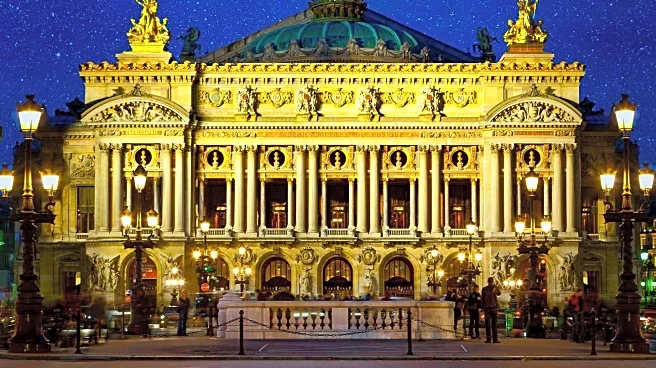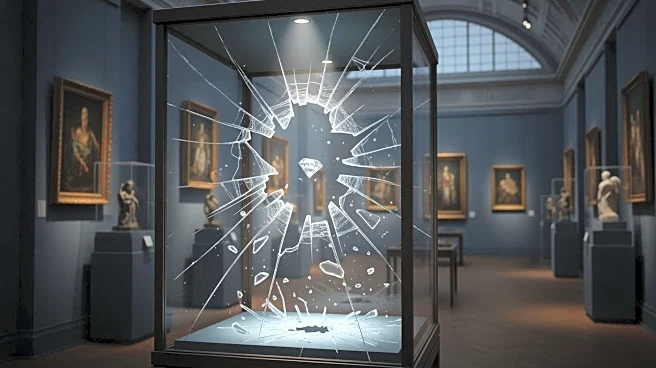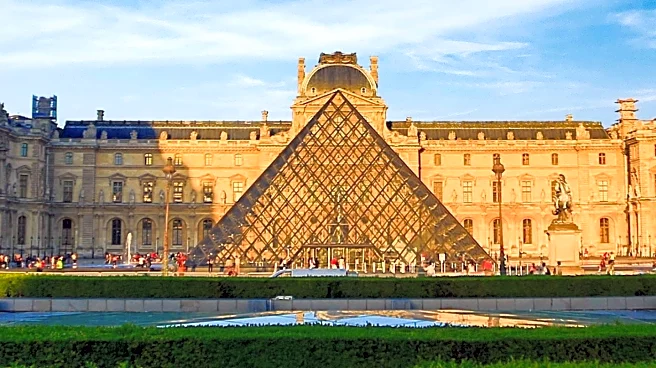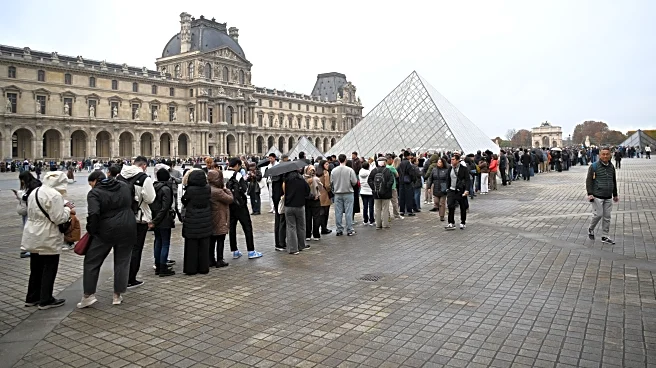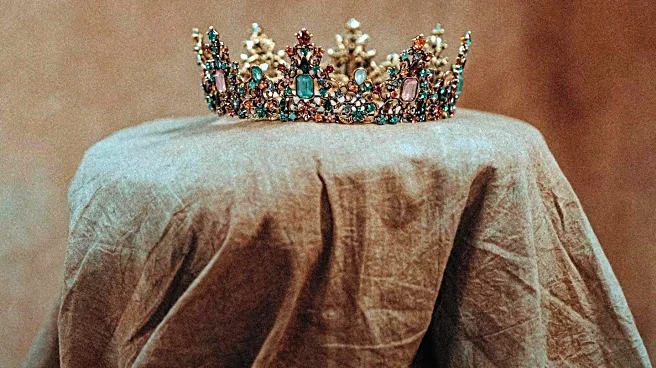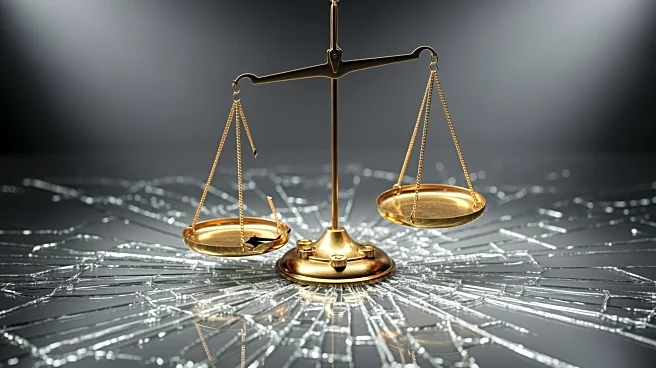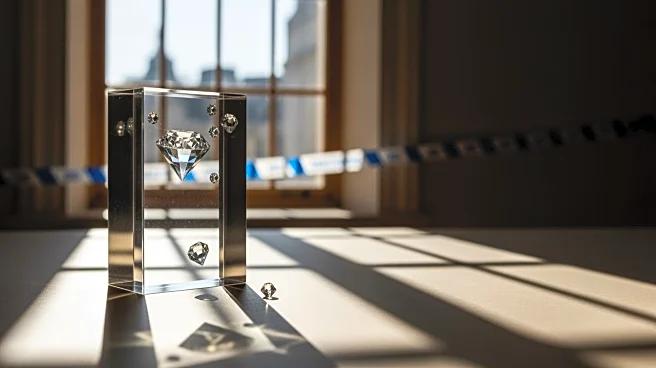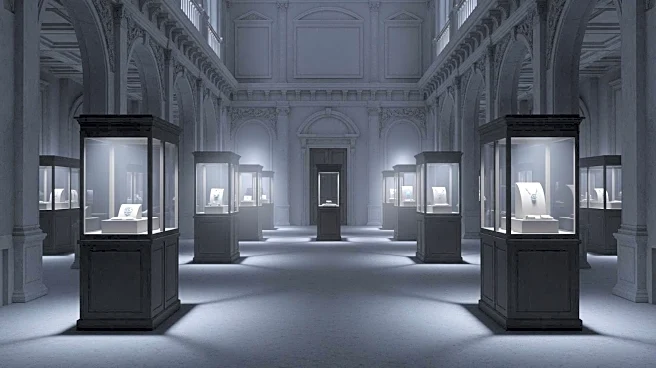What's Happening?
A group of thieves successfully carried out a brazen daylight robbery at the Louvre Museum in Paris, stealing several priceless jewels. The heist involved masked individuals using a basket lift and cutting
tools to break into the gallery housing the royal jewels of France. The stolen items include historically significant pieces, such as an emerald necklace and earring set given by Napoleon to his wife. The theft has shocked the public and raised questions about security measures at one of the world's most famous museums.
Why It's Important?
The theft of the jewels from the Louvre represents a significant cultural loss, as these items hold immense historical and symbolic value for France. The incident has sparked debates about museum security and the protection of cultural heritage. The heist may lead to increased scrutiny and potential reforms in security protocols at museums worldwide. The broader impact includes heightened awareness of the risks to cultural artifacts and the need for international cooperation to prevent and respond to such crimes. Stakeholders such as museum officials, cultural preservationists, and law enforcement agencies are closely monitoring the situation.
What's Next?
French authorities have launched a manhunt for the thieves, employing various investigative techniques, including DNA analysis and surveillance footage review. The stolen jewels have been listed by Interpol, making it difficult for the thieves to sell them intact. The investigation may lead to arrests and recovery of the items, but there is concern that the jewels could be dismantled and sold in parts. The incident may prompt museums to reassess and strengthen their security measures, potentially leading to international collaborations to safeguard cultural heritage.
Beyond the Headlines
The Louvre heist highlights the ongoing challenges in protecting cultural heritage from theft and vandalism. It raises ethical questions about the commodification of historical artifacts and the responsibilities of museums in preserving them. The incident may lead to discussions on the balance between public access to cultural treasures and the need for stringent security measures. Long-term implications could include shifts in public policy and increased funding for cultural preservation efforts, as well as enhanced international cooperation to combat art theft.
